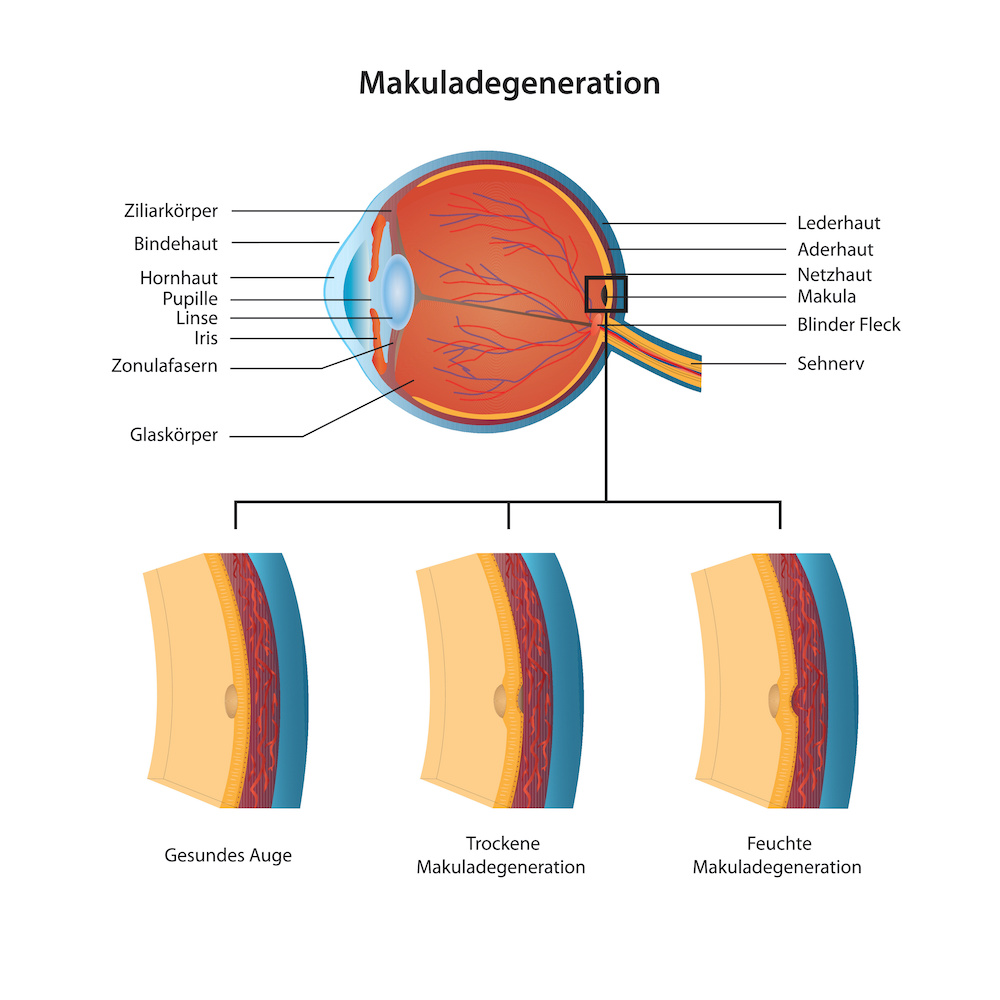Dry and wet form of macular degeneration
With 80%, dry age-related AMD accounts for the majority of macular diseases. With only 20%, wet macular degeneration is less common. The wet AMD can develop from the dry variant. This means that the development of the more aggressive wet macular degeneration can often only be prevented by timely initiated measures.
How do you recognize dry macular degeneration?
The typical symptom of age-related macular degeneration (AMD) is the absence of certain image content, especially in the central visual area. When reading, letters or words seem to be missing, the outline of a person’s head is visible, but not the face itself.
Straight lines, such as fences or house walls present as bent or curved. If you notice these symptoms, you should immediately undergo an examination by an ophthalmologist.
During this process, part of the retina regresses, becomes weaker and may lose its function. Initially, vision is only limited. Later, the central field of vision is significantly reduced. In the dry form of macular degeneration, conventional medicine often prescribes the intake of vitamins.
How to recognize wet macular degeneration?
If the dry form of macular degeneration changes into the wet one, the disease progresses faster. In this form, the body tries to help itself by forming another network of veins in the eye.
Triggered by a certain enzyme (VEGF) new blood vessels grow under and into the retina. This leads to hemorrhages and swellings, later also to scarring. This development leads to major limitations. Reading, driving and recognizing faces are then no longer possible.
 No real cure by injections into the affected eye
No real cure by injections into the affected eye
In classical ophthalmology, the patient is mainly injected with drugs – such as VEGF inhibitors – into the affected eye. A real cure is not to be expected from them.

